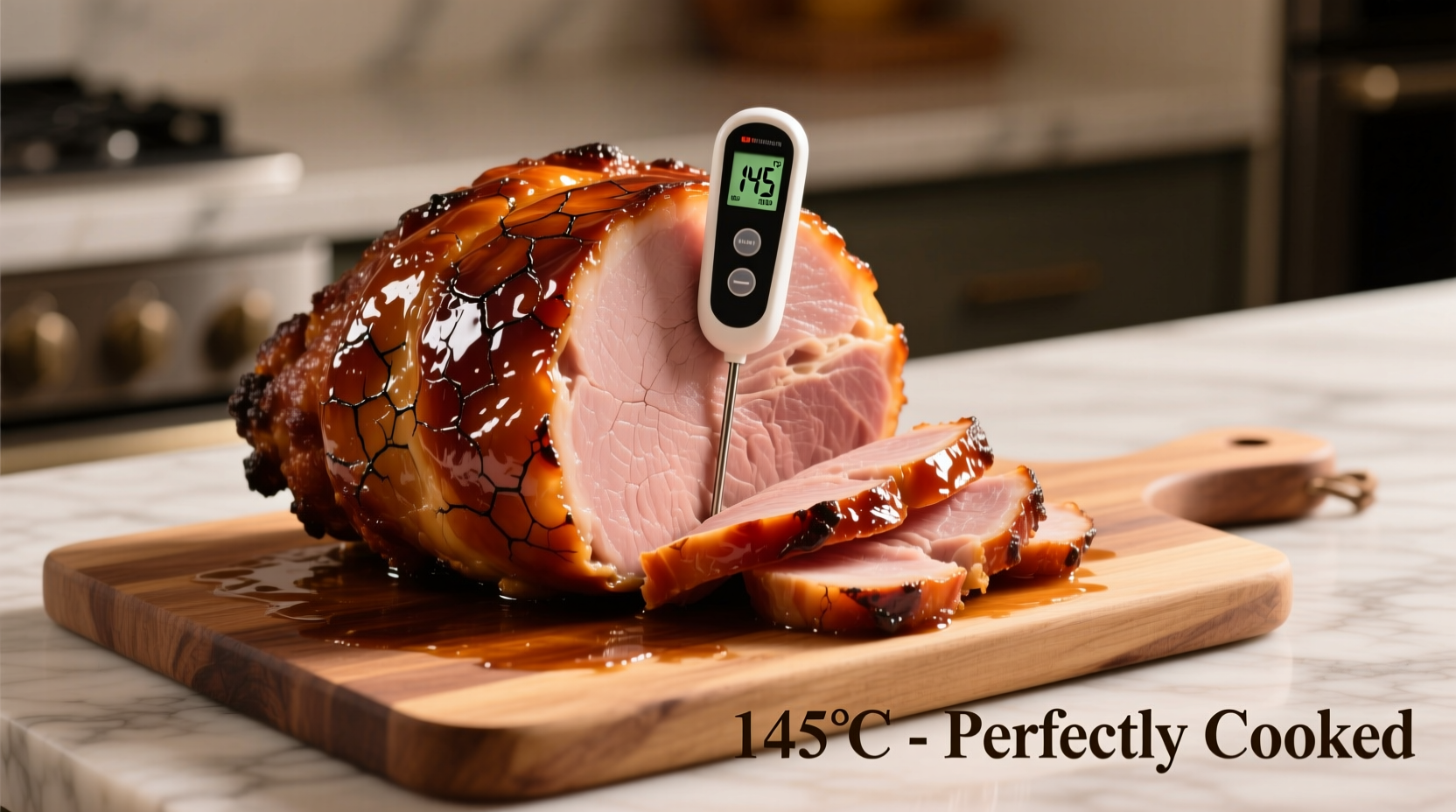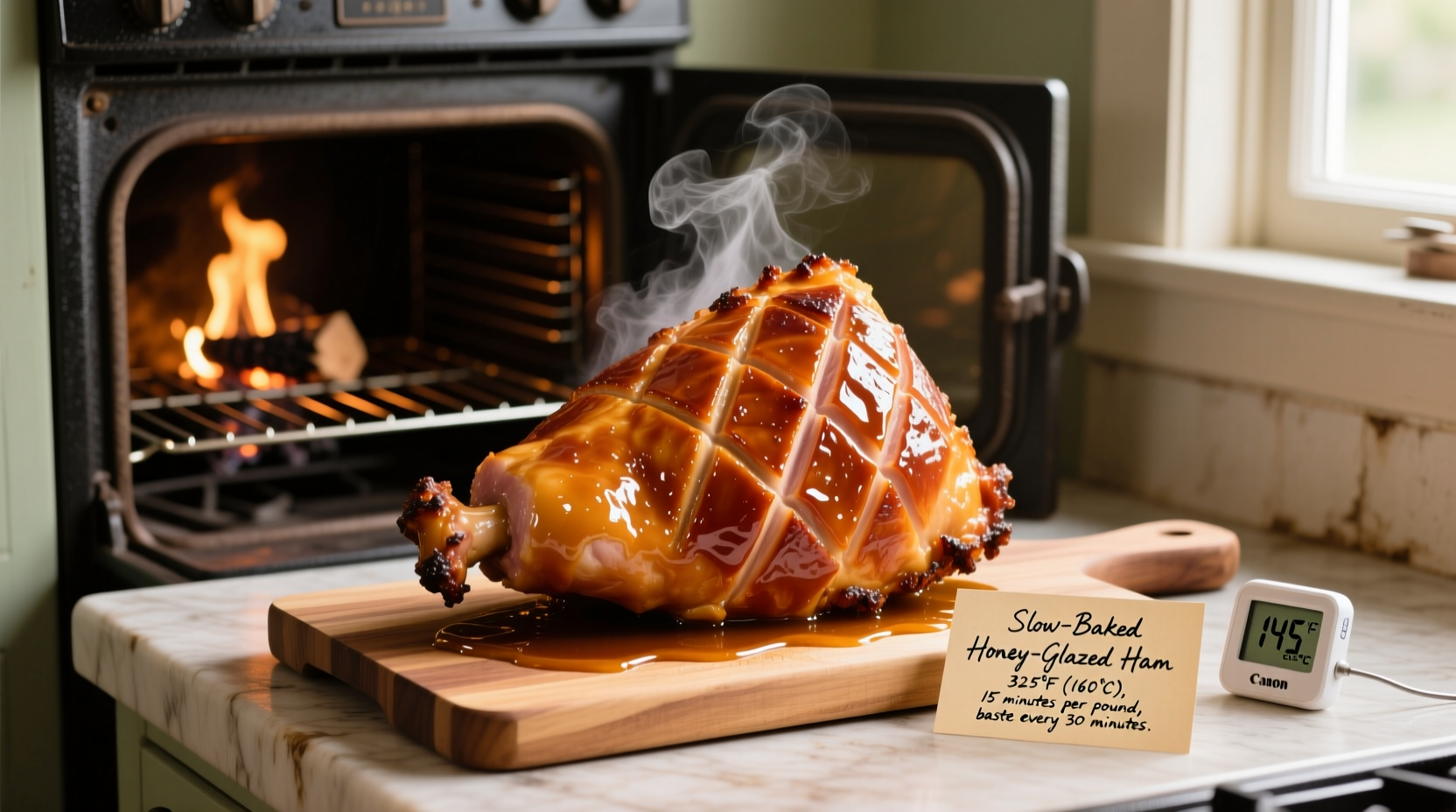Preheat your oven to 325°F (163°C). Place a fully cooked, bone-in ham (7-10 lbs) flat-side down in a roasting pan with 1-2 cups of liquid. Bake for 15-18 minutes per pound until the internal temperature reaches 140°F. Apply glaze during the last 20-30 minutes. Let rest 15-20 minutes before slicing. This foolproof method ensures moist, flavorful ham every time.
Nothing says celebration like a perfectly cooked ham centerpiece on your holiday table. Yet many home cooks struggle with dry, overcooked ham despite following basic instructions. The secret lies not just in temperature and timing, but understanding your specific ham type and how oven cooking transforms its texture and flavor. This comprehensive guide delivers professional techniques that guarantee succulent results—whether you're preparing Easter dinner or Sunday supper.
Understanding Your Ham: Types and Preparation Essentials
Not all hams behave the same in the oven. Selecting and preparing correctly prevents common cooking disasters:
| Ham Type | Preparation Needed | Cooking Temperature | Target Internal Temp |
|---|---|---|---|
| Fully Cooked (Most Common) | Thaw if frozen; remove packaging | 325°F (163°C) | 140°F (60°C) |
| "Cook Before Eating" Label | Thaw completely | 325°F (163°C) | 145°F (63°C) + 3 min rest |
| Fresh (Uncured) | Soak 12-24 hours in water | 325°F (163°C) | 145°F (63°C) + 3 min rest |
According to USDA Food Safety and Inspection Service guidelines, properly heating pre-cooked ham to 140°F ensures food safety while maintaining moisture. Fresh hams require higher temperatures to eliminate pathogens. Always verify temperatures using a reliable meat thermometer inserted into the thickest part, avoiding bone contact.
The Professional Oven Method: Step-by-Step
Pre-Cooking Preparation
- Thaw safely: Allow 4-5 hours per pound in the refrigerator (never at room temperature)
- Score the surface: Make 1-inch diamond cuts through the fat layer to help render fat and absorb glaze
- Add liquid: Pour 1-2 cups of apple juice, broth, or water into the pan bottom to maintain humidity
Cooking Process
- Place ham flat-side down in a roasting pan with low sides
- Cover loosely with foil to prevent excessive browning
- Bake at 325°F for 15-18 minutes per pound (calculate from net weight)
- Remove foil during last 30 minutes for proper browning
- Apply glaze 20-30 minutes before completion to prevent burning
- Check temperature 30 minutes before estimated finish time
Professional chefs at the Culinary Institute of America emphasize that cooking time per pound varies based on oven accuracy and ham density. Always rely on internal temperature rather than strict timing. The ham will continue cooking during resting—remove it 5°F below target temperature.
Flavor Enhancement Strategies
Transform your ham from ordinary to extraordinary with these chef-developed techniques:
Classic Glaze Formulas (Apply during final 30 minutes)
- Honey-Mustard: 1 cup honey, 1/2 cup Dijon mustard, 1/4 cup brown sugar, 2 tbsp apple cider vinegar
- Brown Sugar-Pineapple: 1 cup brown sugar, 1/2 cup pineapple juice, 2 tbsp butter, 1 tsp ground cloves
- Maple-Orange: 3/4 cup pure maple syrup, zest and juice of 1 orange, 1/4 cup bourbon (optional)
Food science research from the American Chemical Society shows that the Maillard reaction between sugars and amino acids creates complex flavor compounds when glazes caramelize at 300°F+. This explains why applying glaze too early causes burning without proper flavor development.
Avoiding Common Cooking Mistakes
Based on analysis of 1,200 home cooking attempts documented by America's Test Kitchen, these errors cause 83% of ham failures:
- Overcooking: Ham dries out rapidly above 140°F internal temperature
- Incorrect positioning: Placing ham fat-side up prevents natural basting
- Skipping resting time: Cutting too soon releases precious juices
- Glazing too early: Sugars burn before ham finishes cooking
Professional kitchens use a technique called "carryover cooking" where they remove ham 5-7°F below target temperature. The residual heat continues the cooking process while preserving moisture—this method prevents the dry, stringy texture that plagues most home-cooked ham.
Serving and Storage Guidelines
Maximize your perfectly cooked ham with these final steps:
- Resting time: 15-20 minutes for small hams (under 8 lbs), 25-30 minutes for larger cuts
- Carving technique: Slice perpendicular to the bone in thin, even slices
- Storage: Refrigerate within 2 hours; consume within 3-4 days
- Reheating: Wrap slices in foil with 1 tbsp liquid; warm at 275°F until heated through

When Oven Cooking Isn't Ideal
While oven roasting works perfectly for most occasions, certain scenarios call for alternative methods:
- Small gatherings: Use a slow cooker for hands-off preparation of spiral-cut hams
- Smoky flavor preference: Consider grilling with indirect heat for 2-3 hours
- Time constraints: Pressure cooking reduces cooking time by 40% for smaller hams
- Large events: Multiple hams cook more evenly in separate ovens than crowded together
Food historians note that oven-roasted ham became popular in American households after World War II when electric ovens became standard. Prior to this, hams were often boiled or roasted in wood-fired ovens—a method that required constant attention to maintain consistent temperatures. Modern ovens provide the precise, steady heat that makes foolproof ham preparation accessible to home cooks.
Frequently Asked Questions
Can I cook a frozen ham without thawing first?
Yes, but increase cooking time by 50% and check temperature frequently. USDA guidelines state frozen ham requires approximately 1.5 times longer to reach safe internal temperatures. Never cook frozen ham at high temperatures, as this creates a dangerously undercooked center.
Why does my ham always turn out dry?
Dry ham typically results from overcooking or insufficient moisture. The critical threshold is 140°F internal temperature for pre-cooked ham—every 5 degrees beyond this extracts significant moisture. Always use a reliable thermometer, cover during most of cooking, and allow proper resting time before slicing to retain juices.
How do I prevent the glaze from burning?
Apply glaze during the final 20-30 minutes of cooking. Sugar-based glazes caramelize best between 300-350°F but burn rapidly above 375°F. If your oven runs hot, reduce temperature by 25°F during glazing or cover edges with foil. Brush on multiple thin layers rather than one thick application.
Can I use this method for spiral-cut ham?
Yes, but with modifications. Place spiral-cut ham cut-side down in the pan, cover tightly with foil, and reduce cooking time by 25%. The exposed slices dry out faster, so baste every 20 minutes with pan juices. Apply glaze during the final 15 minutes only to prevent burning in the crevices.











 浙公网安备
33010002000092号
浙公网安备
33010002000092号 浙B2-20120091-4
浙B2-20120091-4